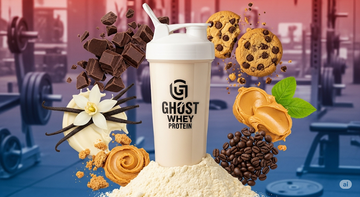Creatine is one of the most popular and effective supplements for enhancing athletic performance, increasing muscle mass, and improving cognitive function. But with so many different forms of creatine available on the market, how do you know which one is best for you? In this article, we will compare creatine pills and powder, and help you decide which form of creatine is right for your goals and preferences.
TL;DR
- Creatine pills offer convenience and a longer shelf life but may suffer from lower bioavailability and higher costs.
- Creatine powder boasts higher versatility, purity, and potentially better absorption but can be less stable and more cumbersome to use.
- While both forms are effective, powder may have a slight edge in absorption, mixability, dosage control, and affordability.
- The optimal choice depends on your individual needs, goals, and lifestyle.
What is creatine and why is it important?
Creatine is a natural substance found in muscles and brain, synthesized from amino acids: arginine, glycine, and methionine. While your body produces about 1g of creatine daily, additional sources like meat and fish can be beneficial. Creatine is crucial for energy metabolism, especially during high-intensity exercises. It boosts adenosine triphosphate (ATP) production, enhancing strength, endurance, muscle growth, and cognitive function. Extensively researched for over 80 years, creatine is safe and well-tolerated at recommended doses, with hydration being key to minimizing side effects like bloating or cramps.
Creatine Pills
Creatine pills are capsules or tablets that contain creatine in a solid form. They are usually made from creatine monohydrate, which is the most common and well-studied form of creatine. However, some pills may also contain other forms of creatine such as creatine hydrochloride (HCl), creatine ethyl ester (CEE), or creatine nitrate (NO3).
Advantages:
- Convenience: Easily portable, creatine pills are perfect for active lifestyles.
- Ease of Use: Ideal for those who prefer not to measure or mix powders.
- Stability: Longer shelf life, less sensitive to environmental factors.
Disadvantages:
- Bioavailability: Some studies suggest lower absorption rates than powder.
- Cost: Generally more expensive per gram of creatine.
- Additives: Potential presence of unnecessary additives.
Creatine Powder
Creatine powder is creatine in a powdered form. It is usually mixed with water or juice before consumption. Creatine powder can be made from different forms of creatine, such as creatine monohydrate, creatine HCl, creatine CEE, or creatine NO3. However, creatine monohydrate is the most widely used and researched form of creatine powder.
Advantages:
- Bioavailability: Higher absorption rates due to faster dissolution.
- Versatility: Easily adjustable dosages and can be mixed with other supplements.
- Purity: Fewer additives, offering a more concentrated form of creatine.
Disadvantages:
- Inconvenience: Requires measurement and mixing.
- Portability: Less convenient for on-the-go use.
- Stability: More sensitive to environmental factors, potential for degradation.
Creatine Pills vs. Powder Comparison
The table below summarizes the main differences between creatine pills and powder:
|
Creatine Pills |
Creatine Powder |
|
Absorption: slower and less efficient |
Absorption: faster and more efficient |
|
Mixability: easy to swallow with water or juice |
Mixability: need to dissolve in liquid |
|
Dosage: fixed and convenient |
Dosage: flexible and customizable |
|
Price: more expensive per serving |
Price: cheaper per serving |
Which Form of Creatine Is Right for You?
Ultimately, the "best" creatine depends on your unique needs and preferences:
- Convenience kings: Pills reign supreme for popping and go ease.
- Performance seekers: Powders take the crown for faster absorption and customization.
- Budget warriors: Powders often win the price war.
- Sensitive stomachs: Opt for pills (or consider micronized creatine) to avoid potential digestive woes.
How to Take Creatine: Maximizing Benefits
- Loading Phase: A 5-7 day period with higher doses (20-25 grams/day) to quickly raise muscle creatine levels.
- Maintenance Phase: A long-term strategy involving 3-5 grams daily to sustain levels.
- Timing: Suggestions on when to take creatine for optimal results, with a visual guide for clarity.
Conclusion
Creatine is a supplement that can improve your athletic performance, muscle mass, and recovery. However, you need to choose the best form of creatine for you, depending on your preferences, goals, and budget. Creatine pills are convenient and easy to use, but creatine powder is more effective and cheaper. The best form of creatine overall is creatine monohydrate powder, which you can take 3 to 5 grams per day, preferably before or after your workout. You should also eat a balanced diet, drink enough water, and exercise regularly to get the most out of creatine.
To dive deeper into the comparison between creatine monohydrate and micronized creatine, I recommend reading our detailed article, Creatine Monohydrate vs Micronized: The Ultimate Comparison. This article will provide you with a comprehensive understanding of the differences between these two forms and help you make an informed decision.
For high-quality creatine supplements and a wide range of fitness products, visit Ultimate Sup in Singapore. We offer a selection of top-notch supplements to support your fitness journey. Make the right choice and elevate your athletic performance with Ultimate Sup.










